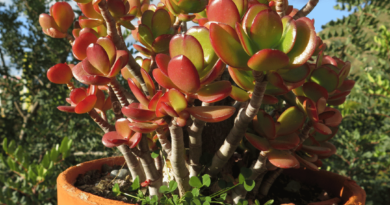The Beauty of Variegated Succulents: How to Care for These Unique Plants
Succulents are a popular choice for indoor and outdoor gardening due to their low-maintenance nature and unique appearance. Among the vast variety of succulent plants, variegated succulents stand out for their captivating beauty. Variegation is the result of a genetic mutation that causes portions of a plant to have a different colour than the rest of the plant. These unique plants can add an eye-catching element to any garden or indoor plant collection. In this book, we will explore the beauty of variegated succulents and learn how to care for them.
What Are Variegated Succulents?
Variegation is a genetic mutation that causes portions of a plant to have a different colour than the rest of the plant. In variegated succulents, this mutation results in patterns of stripes, spots, or blotches of different colours on the leaves. The colours can range from shades of green, yellow, white, pink, red, or purple.
Some popular variegated succulent species include:
- Haworthia cooperi var. truncata ‘Lime Green’
- Echeveria elegans ‘Mexican Snowball’
- Crassula ovata ‘Tricolor’
- Aloe vera ‘Variegata’
Why Are Variegated Succulents Special?
Variegated succulents are special for several reasons. Firstly, their unique patterns and colours make them stand out from other plants. They can add visual interest to any garden or indoor plant collection.
Secondly, variegated succulents are generally more challenging to propagate than non-variegated succulents. This is because the genetic mutation that causes variegation is unstable and can result in offspring with non-variegated leaves. This makes variegated succulents rare and highly sought after by collectors.
How to Care for Variegated Succulents
Like other succulent plants, variegated succulents require specific care to thrive. Here are some tips for caring for variegated succulents:
- Light: Variegated succulents need bright, indirect light to thrive. Direct sunlight can cause their leaves to burn, while too little light can cause the variegation to fade.
- Watering: Watering frequency for variegated succulents depends on the species and the growing conditions. In general, allow the soil to dry out completely between waterings. Overwatering can cause root rot, while underwatering can cause the leaves to shrivel.
- Soil: Variegated succulents need well-draining soil. A mix of perlite, sand, and peat moss works well.
- Temperature: Variegated succulents prefer warm temperatures between 15-26°C (60-80°F).
- Fertilizer: Variegated succulents benefit from a balanced fertilizer applied once a month during the growing season.
- Pruning: Prune any dead or damaged leaves from the plant to promote healthy growth.
Propagating Variegated Succulents
Propagating variegated succulents can be challenging because the genetic mutation that causes variegation is unstable. However, there are a few methods that can increase the chances of propagating variegated succulents:
- Leaf cuttings: Take a healthy leaf cutting from the variegated succulent and let it dry out for a few days. Once it has calloused over, place it in well-draining soil and water sparingly. Keep the cutting in bright, indirect light and wait for new growth to appear.
- Stem cuttings: Take a healthy stem cutting from the variegated succulent and let it dry out for a few days. Once it has calloused over, plant the stem cutting in well-draining soil and water sparingly. Keep the cutting in bright, indirect light and wait for new growth to appear.
- Division: Divide the plant by gently separating the offsets (baby plants) from the main plant. Plant the offsets in well-draining soil and water sparingly. Keep the new plants in bright, indirect light and wait for new growth to appear.
It is important to note that not all propagations will result in variegated offspring. It is also important to use a sharp, sterilized tool when taking cuttings to prevent disease or infection.
Common Problems and Solutions
Like any plant, variegated succulents can experience some problems. Here are some common problems and their solutions:
- Overwatering: Overwatering can cause root rot, which can be fatal to the plant. If you notice yellowing or soft leaves, cut back on watering and allow the soil to dry out completely.
- Underwatering: Underwatering can cause the leaves to shrivel and dry out. If you notice this, increase the frequency of watering and ensure the soil is moist but not waterlogged.
- Pests: Common pests that can affect variegated succulents include mealybugs, scale insects, and spider mites. Use an organic insecticidal soap or neem oil to treat the affected plant.
- Fading Variegation: Variegation can fade if the plant is not receiving enough light. Move the plant to a brighter location to encourage vibrant variegation.
Conclusion
Variegated succulents are a unique and captivating addition to any garden or indoor plant collection. While they require specific care, their beauty and rarity make them highly sought after by collectors. By following the tips and techniques outlined in this book, you can successfully care for and propagate variegated succulents. Enjoy the beauty of these unique plants!




